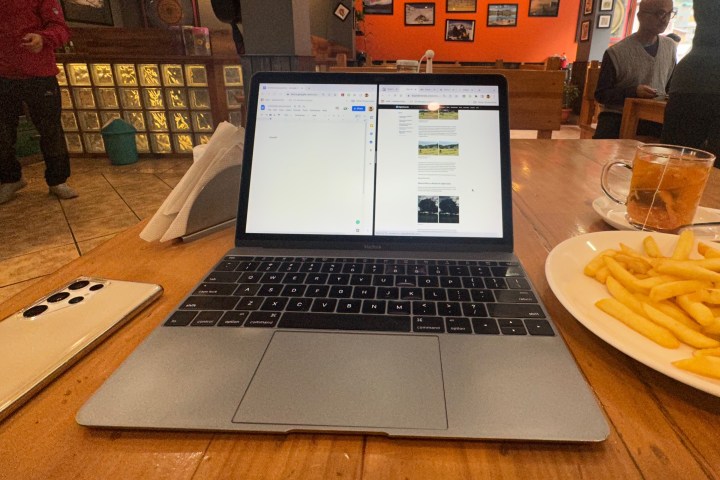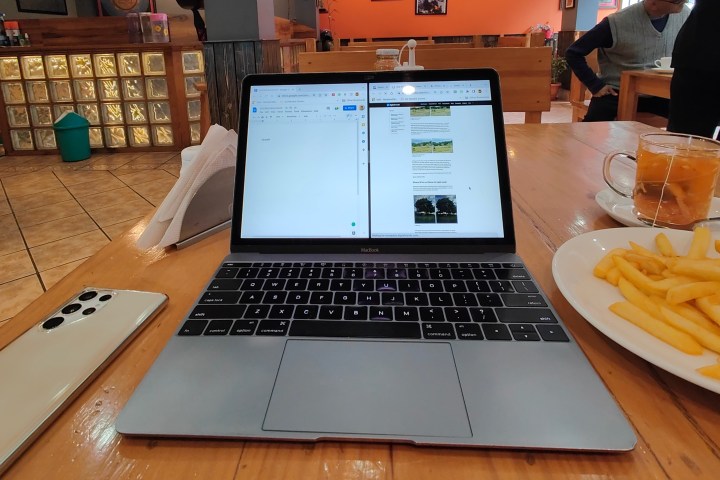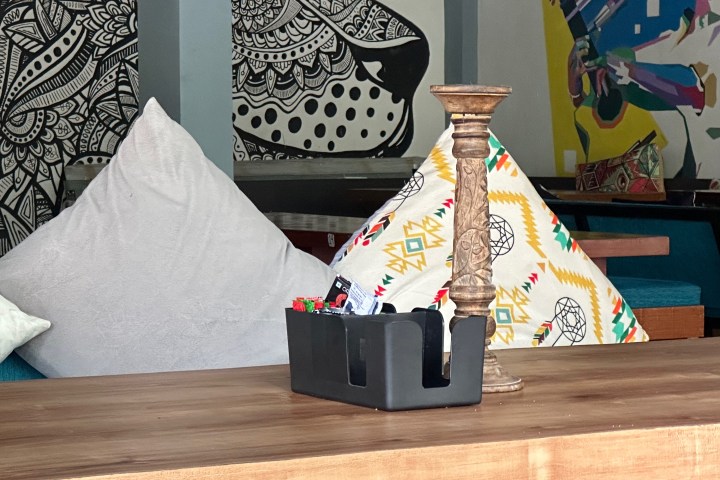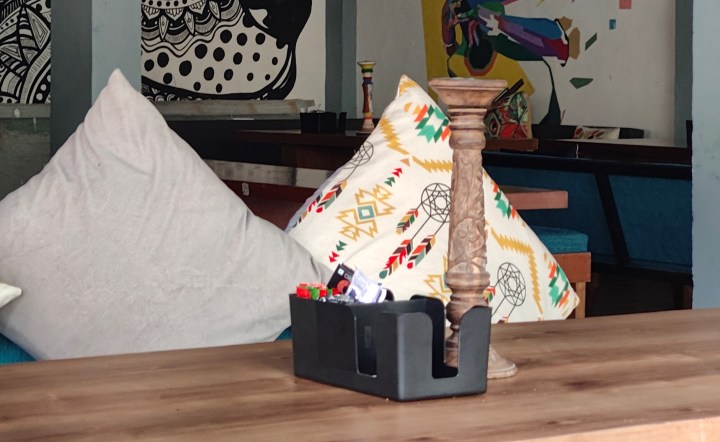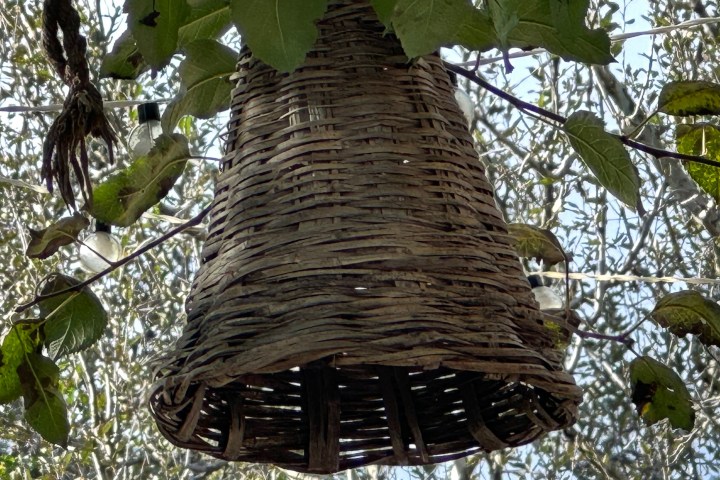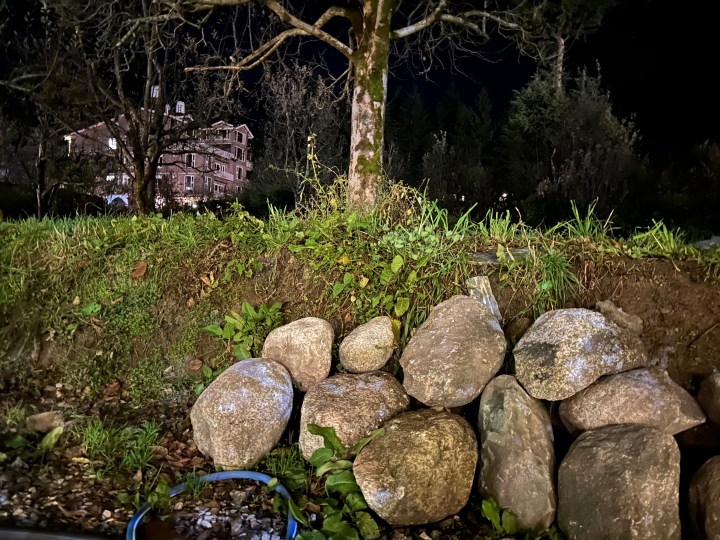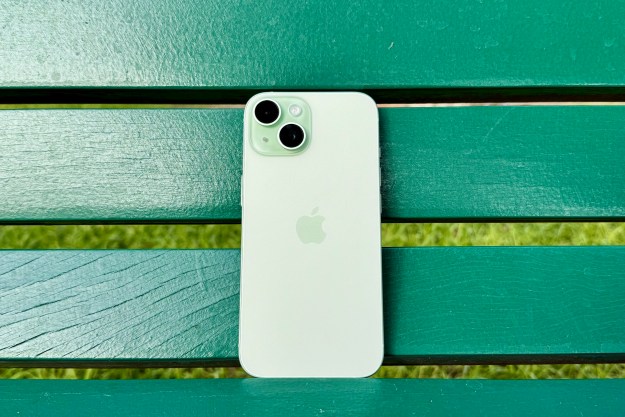The iPhone 14 Pro marks Apple’s first major camera upgrade in a while, and in our tests, it has proved to be a capable performer. The OnePlus 10 Pro, with all its Hasselblad-tuned photography chops, was only $100 cheaper than the iPhone 14 Pro at launch and was positioned as a rival to Apple’s Pro flagship.
- iPhone 14 Pro vs. OnePlus 10 Pro: camera specifications
- iPhone 14 Pro vs. OnePlus 10 Pro: main camera
- iPhone 14 Pro vs. OnePlus 10 Pro: ultrawide camera
- iPhone 14 Pro vs. OnePlus 10 Pro: zoom camera
- iPhone 14 Pro vs. OnePlus 10 Pro: portrait mode
- iPhone 14 Pro vs. OnePlus 10 Pro: night mode
- iPhone 14 Pro vs. OnePlus 10 Pro: selfies
- Final thoughts on the winner
If you’ve been torn between the two, with camera skills being your main requisite, we’re here to help. In this detailed camera showdown, we’ll go through the strengths and weaknesses of each phone across different lenses and varied scenarios to find out the imaging heavy-hitter.
iPhone 14 Pro vs. OnePlus 10 Pro: camera specifications
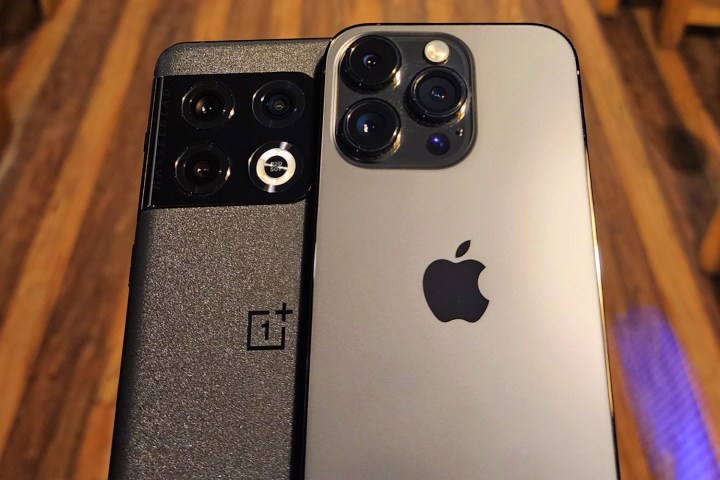
With the iPhone 14 Pro, Apple is finally catching up with the competition in the megapixel game. The Apple flagship comes armed with a 48-megapixel primary camera (f/1.78), assisted by a 12MP wide-angle camera (f/2.2, 120-degree field of view) and a 12MP telephoto zoom camera that delivers 3x optical zoom in range.
Apple is also betting on software-side enhancements this year, thanks to the new computational photography trick that the company markets as Photonic Engine. On the front is the 12MP (f/1.9) TrueDepth camera system that is capable of recording videos at up to 4K 60fps.
Coming to the OnePlus 10 Pro, its imaging hardware is led by a 49MP (f/1.8) snapper. It sits alongside a 50MP ultrawide camera (150-degree field of view) and an 8MP telephoto camera with 3.3x optical zoom output. The OnePlus 10 Pro’s main camera can record 4K video at up to 60fps and super slo-mo footage at up to 480fps.
For selfie and video calling duties, OnePlus has equipped its flagship with a 32MP selfie camera. It is a fixed-focus snapper, which makes a huge difference compared to the autofocus perk offered by the iPhone 14 Pro’s selfie camera.
iPhone 14 Pro vs. OnePlus 10 Pro: main camera
The 48-megapixel camera fitted inside each phone captures photos at 12MP by default. There is an ample amount of detail in pictures with accurate colors under daylight, but the iPhone 14 Pro offers a wider dynamic range and handles highlights better than the OnePlus 10 Pro.
The OnePlus 10 Pro routinely struggles with capturing tree foliage under broad daylight, giving a muted look to the lush greenery and delivering a flat depth profile. If you zoom in, it also becomes evident that the iPhone 14 Pro’s daylight samples are sharper, with more surface-level details and a pleasing color profile.
- 1. iPhone 14 Pro
- 2. OnePlus 10 Pro
The blacks are darker, and the overall image looks more contrasted when captured from the iPhone 14 Pro. At close range, the main camera on the OnePlus 10 Pro struggles with locking the focus and often blurs out parts that should be in the focus.
The OnePlus flagship also engages in aggressive oversaturation when it detects bright colors at the macro range, and in doing so, softens the image. The surface textures, ridges, and veins on a flower petal are often lost in a sea of mushy bright colors.
- 1. Macro image from iPhone 14 Pro
- 2. Macro image from OnePlus 10 Pro
The iPhone 14 Pro is also superior at identifying subjects and highlighting them, while the OnePlus often struggles with inanimate objects alongside the edges. Photos clicked indoors by the OnePlus 10 Pro have a more saturated profile, but the camera really struggles against bright light sources and blows out the real color.
Winner: iPhone 14 Pro
iPhone 14 Pro vs. OnePlus 10 Pro: ultrawide camera
Ultrawide photography is where the OnePlus 10 Pro ups the ante, thanks to its beefier 50MP sensor. By default, the OnePlus 10 Pro clicks photos at about 12MP resolution, thanks to the pixel-binning tech, which combines four adjacent pixels algorithmically to create a larger super-pixel that can capture four times as much light data.
To start, both phones have very different approaches to color science, just like the shots captured by the main camera. The ultrawide shots clicked by the OnePlus flagship follow a different approach, clicking colder pictures by default, especially in indoor lighting scenarios.
- 1. iPhone 14 Pro
- 2. OnePlus 10 Pro
The OnePlus 10 Pro’s ultrawide snapper takes full advantage of the pixel-binning benefit in daylight, capturing photos that are brighter with a higher ISO value. Elements like tree foliage are exposed well, and there are ample colors. However, the ultrawide angle shots from the iPhone 14 Pro offer a higher sharpness and clarity when zoomed in.
The iPhone 14 Pro is also better at retaining surface details, and overall, there is less fuzziness around the edges. For far-out elements in an image, the slight oversaturation and more pixel-level data collected by the OnePlus 10 Pro’s 50MP ultrawide snapper lets you make out more surface details and colors, but at the cost of sharpness.
- 1. iPhone 14 Pro
- 2. OnePlus 10 Pro
The ultrawide shots clicked by the iPhone 14 Pro turn out better under harsh daylight than the OnePlus 10 Pro. Where the OnePlus device washes out the colors, the iPhone 14 Pro’s ultrawide shots offer more natural colors and far better depth perception.
However, the difference in quality is stark indoors. The full-resolution 50MP ultrawide shots captured by the OnePlus 10 Pro are sharper, with more accurate colors, higher contrast, less noise, and better clarity. The pixel-binned photos are also brighter with more punchy colors, even though the iPhone beats them at edge sharpness.
Winner: Draw
iPhone 14 Pro vs. OnePlus 10 Pro: zoom camera
The iPhone 14 Pro’s optically-stabilized 12MP zoom camera is a little too good for the OnePlus 10 Pro’s 8MP telephoto camera. The Apple flagship offers 3x optical zoom range and 15x digital zoom, while the OnePlus goes just a bit further with 3.3x optical zoom and 30x digital zoom.
Starting with comparisons of each phone’s native optical zoom range, both devices deliver crisp photos. However, the iPhone 14 Pro allows for easier focus locking, and there is little color disparity when switching from the main to the telephoto camera.
Coming to the raw image quality, though, the iPhone 14 Pro delivers true-to-life colors with tighter control over the dynamic range and improved depth. The 3x zoom shots are noticeably sharper, with clear edge separation and far more discernible surface details compared to those captured by the OnePlus 10 Pro. Take a look at the indoor 3x zoom shots from each phone to see the difference.
- 1. iPhone 14 Pro 3x zoom
- 2. OnePlus 10 Pro 3.3x zoom
Even outdoors with ample sunlight, the OnePlus 10 Pro’s zoom shots have fuzzy edges and way too much noise — especially in darker regions, such as tree foliage in the distance. Objects that are closer look blurry, and the tendency to boost colors gives a slightly warmer tinge to the real shade of objects.
For example, in the 3x zoom shot of the mountain peaks, the plains ahead have a weird blue highlight, and the snow-ice texture looks patchy in the OnePlus 10 Pro’s image.
- 1. iPhone 14 Pro 3x zoom
- 2. OnePlus 10 Pro 3.3x zoom
Despite the higher optical zoom range, the iPhone 14 Pro easily outclasses the OnePlus 10 Pro. But it’s not just the hardware that makes a difference here. Apple’s de-noising and sharpening algorithms are miles ahead of OnePlus, and it becomes quite apparent when taking digitally zoomed-in shots.
In the 10x range, the iPhone 14 Pro absolutely crushes the OnePlus 10 Pro. Colors are far more accurate, there is plenty of surface detail, and highlights are handled well. The post-processing that happens after a 10x photo is clicked truly ups the game.
- 1. iPhone 14 Pro 10x zoom
- 2. OnePlus 10 Pro 10x zoom
In daylight, the OnePlus 10 Pro’s photos have a weird patchy look with strong whitewashing, poor saturation, and far little surface detail. The difference in quality becomes even more apparent at a 15x digital zoom level. The OnePlus 10 Pro can also go up to 30x digital zoom level, but the results are terrible even if you got really stable hands.
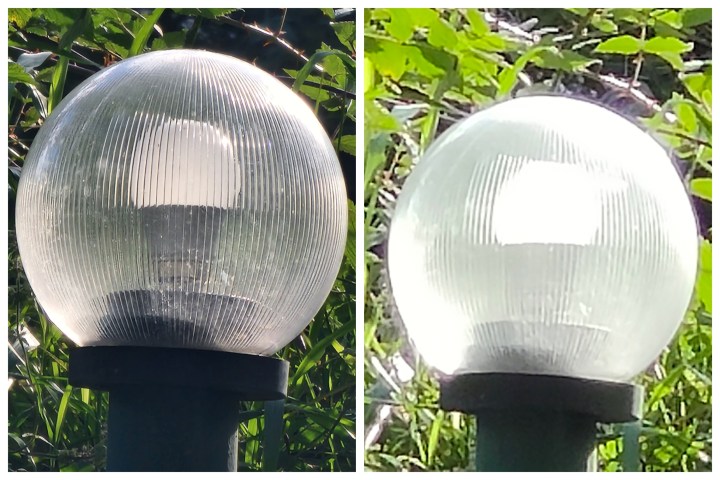
If you really want to explore the 30x hell, check out the sample above from the Samsung Galaxy S22 Ultra and the OnePlus 10 Pro. Needless to say, 30x is almost useless unless you’re using it just to see the silhouette of something your naked eyes won’t let you.
Winner: iPhone 14 Pro
iPhone 14 Pro vs. OnePlus 10 Pro: portrait mode
Both phones can take portraits at 1x and 2x zoom levels, but the iPhone 14 Pro can also deploy its telephoto camera to click bokeh shots at 3x magnification. The difference in quality is again easily noticeable. The
Take, for example, the portrait shot of the good boy below. The iPhone 14 Pro does a really good job of bringing out the fur details, and the color is also truer to life. The OnePlus 10 Pro does a good job of exposing the subject, but crushes the surface details and favors warmer colors that occasionally falter badly.
- 1. iPhone 14 Pro portrait mode
- 2. OnePlus 10 Pro portrait mode
And if you look closely behind each hair, you’ll see that the OnePlus 10 Pro aggressively blurred out the hair and misfired with the bokeh effect by leaving a bit of the background unburied. It’s not a bad photo by any means, but it’s nowhere near as refined as the results you get from the iPhone 14 Pro.
Both phones capture portrait shots with a healthy amount of detail and accurate edge detection with human subjects. But portraits taken indoors under artificial light narrate a different story. The OnePlus 10 Pro again loses out on sharpness, especially the hair and beard, and do a fair bit of smoothening to the skin.

I also noticed the OnePlus 10 Pro consistently struggling with edge-blurring on my second-favorite winter cap. The iPhone 14 Pro retains more details, especially the wrinkles on clothes and stitches, while also doing a better job at producing the bokeh effect.
Winner: iPhone 14 Pro
iPhone 14 Pro vs. OnePlus 10 Pro: night mode
With the OnePlus 9 series, the Chinese smartphone brand made a huge leap in low-light photography. The OnePlus 10 Pro improves on that mantra. Even in lanes where it was impossible to see without a torch, the OnePlus 10 Pro managed to bring out an impressive amount of detail. The iPhone 14 Pro, however, edges past OnePlus’ best efforts at night photography.
- 1. iPhone 14 Pro night mode
- 2. OnePlus 10 Pro night mode
Minute details like surface paint and text are more legible, and there is little light bleeding in night shots from the iPhone. Another area where the OnePlus 10 Pro struggles in low-light are the illuminated objects against a dark background or elements close to a light source.
The OnePlus 10 Pro’s sample was clicked at double the ISO value but nearly one-fourth the focal length of the iPhone 14 Pro’s main camera. Despite bringing out nearly the same magnitude of objects in the frame, it has lower sharpness and far more noise. In extremely dark surroundings, the OnePlus 10 Pro often gives a weird reddish tinge to the scene.
- 1. iPhone 14 Pro night mode
- 2. OnerPlus 10 Pro night mode
With human subjects, the iPhone 14 Pro does a better job of highlighting the face and the overall frame against a challenging backdrop. Interestingly, night mode photos were taken at 3.3x optical zoom level by the OnePlus 10 Pro often beat the iPhone 14 Pro’s 3x zoom night clicks at retaining colors and sharpness.
Winner: iPhone 14 Pro
iPhone 14 Pro vs. OnePlus 10 Pro: selfies
Going by the specifications sheet, this shouldn’t really be a contest. The OnePlus 10 Pro’s 32-megapixel selfie camera delivers sharp photos, but the skin tone almost always has a pinkish tone. It also does a satisfactory job of exposing the subject, and thanks to all those pixels, there is a satisfactory amount of detail under daylight.
One area where it races ahead of the iPhone is that the photos are brighter, especially for the background elements. However, because of that, almost every element except the subject loses out on clarity, especially indoors. Moreover, the color profile is artificially boosted a little too much.
- 1. iPhone 14 Pro portrait selfie
- 2. OnePlus 10 Pro portrait selfie
Another annoyance is that the OnePlus 10 Pro struggles with depicting sharpness in hair, even in well-lit scenarios. When compared to the iPhone 14 Pro’s selfies, the OnePlus 10 Pro makes the hair look splotchy.
But I noticed an odd problem, which must be a bug, because I haven’t noticed it before in a OnePlus phone. When taking selfies under broad daylight, the default camera app produces a weird skin-yellowing effect. Interestingly, that doesn’t happen when using the GCam mod app.
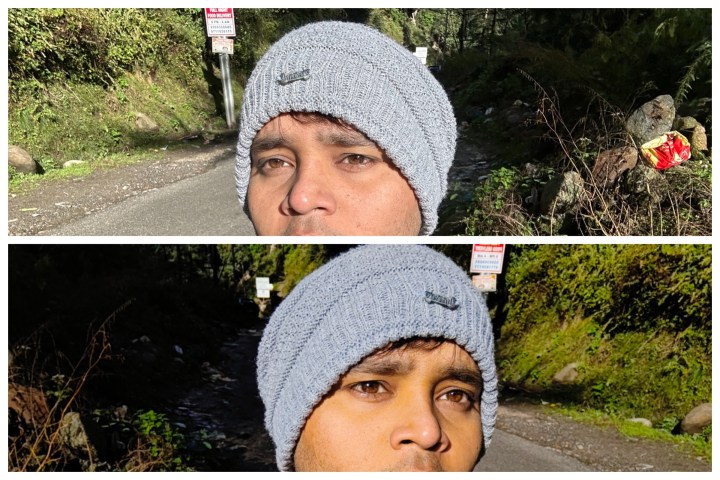
The iPhone 14 Pro, on the other hand, takes far better photos. Skin tones are realistic, and one can easily discern minute details like pores and blemishes in daylight shots. In indoor lighting, the iPhone tends to crush the highlights a bit in order to bring out the subject. As a result, the background elements tend to look a bit darker.
I handed the phones to a few fellow travelers just to be sure about my own findings, and it was a no-contest at all. The overwhelming consensus was that the OnePlus 10 Pro captures softer photos with sub-par color accuracy, sharpness, and depth compared to the iPhone 14 Pro.
Low-light and night-mode selfies delivered similar results. The iPhone 14 Pro selfies have minimal skin smoothening, and background elements turn out to be sharper with better color accuracy. In extremely dark scenarios, the
- 1. iPhone 14 Pro
- 2. OnePlus 10 Pro
The OnePlus 10 Pro tries to keep the artificial brightening a little less aggressive, and even though it comes at the cost of a slightly darker background, the skin looks closer to its natural tone with less artificial touch-up. Overall, the iPhone 14 Pro is a far more capable selfie camera. If you have a OnePlus 10 Pro in your pocket, install a GCam mod, as it delivers far better results than the stock camera app.
Winner: iPhone 14 Pro
Final thoughts on the winner
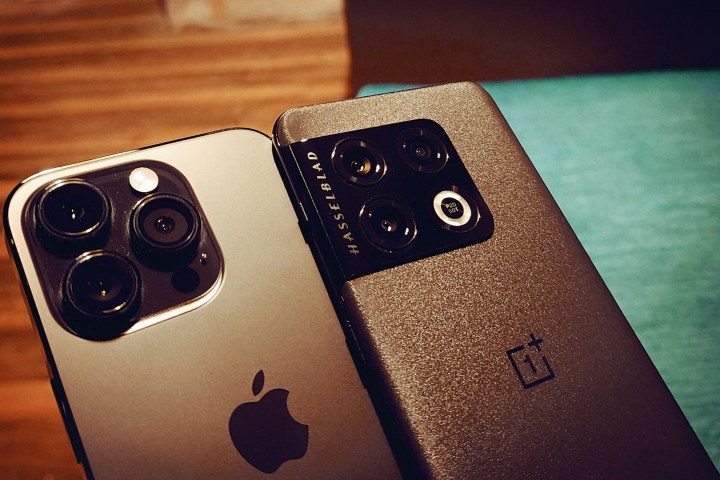
The OnePlus 10 Pro starts off strong with a capable main camera, producing sharp photos with an eye-pleasing saturation profile and impressive night modem results. It even manages to beat the iPhone at ultrawide photography on a healthy few parameters, but Apple’s computational photography chops are way ahead.
However, the iPhone 14 Pro really crushes its OnePlus rival at zoom output and offers portrait shots that are far richer in detail with excellent edge clearance. Selfies from the autofocus-happy front camera are also in a league of their own, while the OnePlus 10 Pro’s front camera could really use some color tuning and algorithm adjustment.
Overall, if budget is not your concern and camera output is your key priority, the iPhone 14 Pro should be an easy choice. We are also pitting the
Editors' Recommendations
- This is the iPhone concept of my dreams
- A big iPhone update is right around the corner
- One of the most iconic iPhone accessories is back — and it’s great
- iPhone 16: news, rumored price, release date, and more
- Nomad’s new iPhone case and Apple Watch band may be its coolest yet






